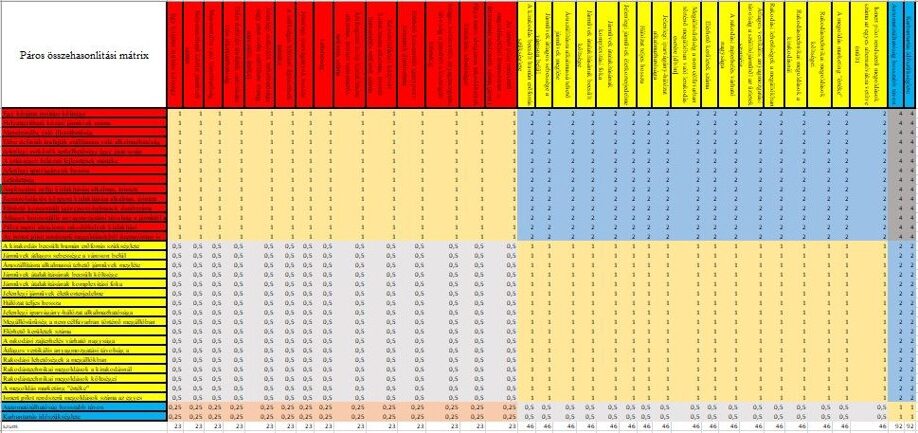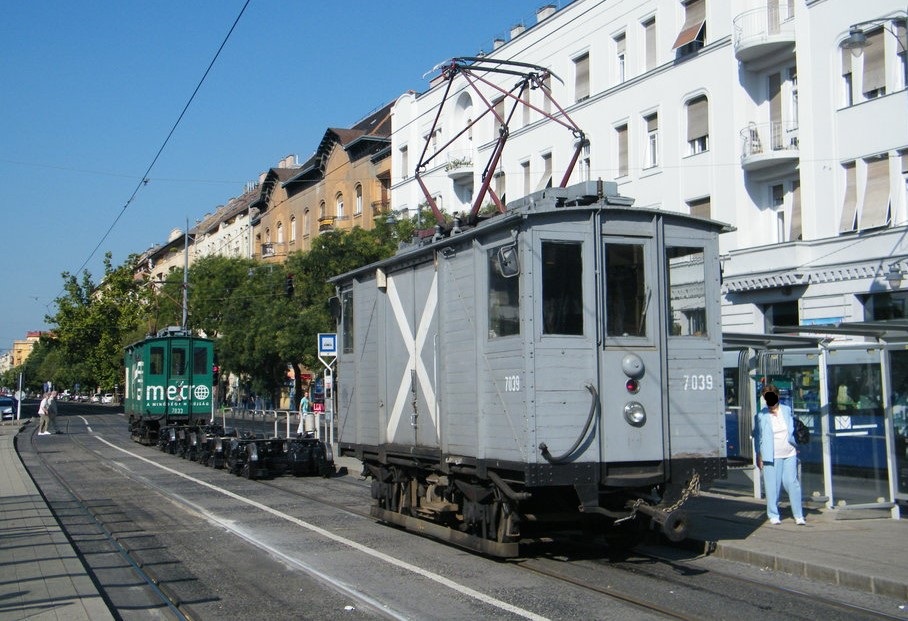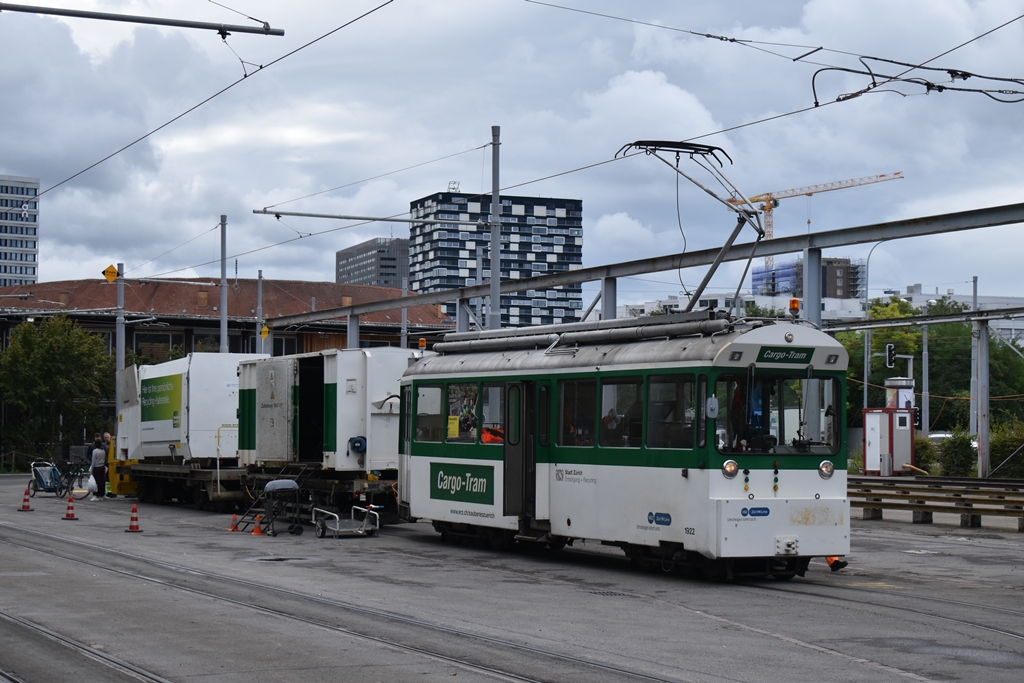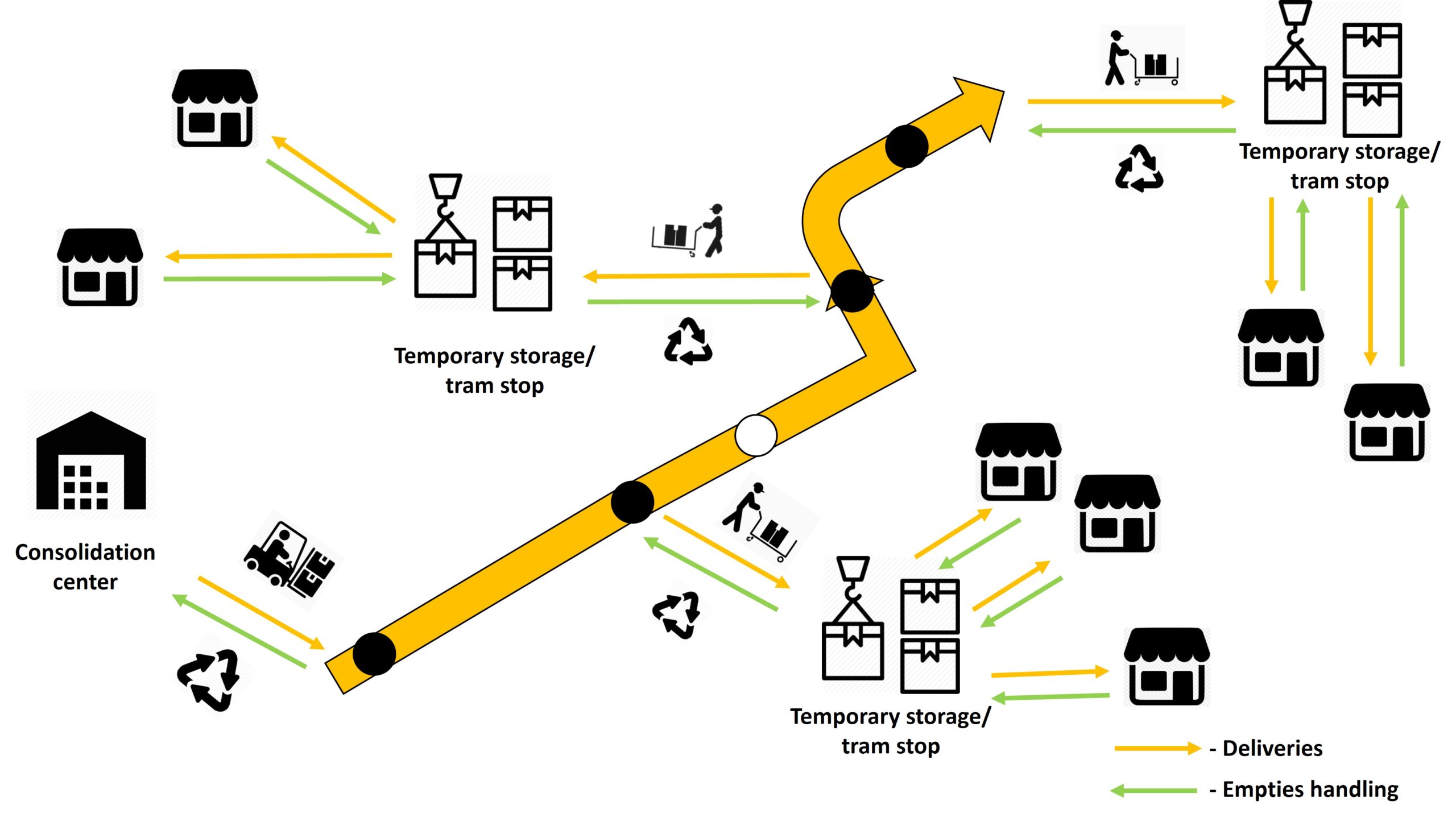Examination of the application possibilities of using urban railways for city logistics purposes in Budapest
Students who have earlier worked on this project: Henriett Kormos, Sándor Márk Pintér, Gábor Szőllős, Petra Major, Máté Posta
Supervisors: Krisztián Bóna, Dávid Lajos Sárdi
Start of the project: February 2019
Because of their size, cities have huge delivery requirements, which are nowadays almost exclusively served via roads through numerous companies. In the cities, there are integrated modes of transport and infrastructure, which have been unused in transporting goods for the last twenty years in most cities. Budapest is no exception. In the city, only road vehicles are used for city logistics purposes, which can’t serve the city’s requirements in an environmentally friendly way. For this, consolidation centers and appropriate pick-up points are necessary.
In 2019, we started to examine the possibilities of using the metro system in Budapest for city logistics. With the help of experts and surveying, we conducted comprehensive research about the network. To these results and the sealed nature of the metro network, it wouldn’t be effective enough to develop and maintain a system there, and it would be a lot more expensive than to do the same with trams. Improvised by this project, we really wanted to prepare a ranking method based on complex criteria, which could help us evaluate the city logistics systems using urban railways. This study examined the main part of the deliveries, the connection between the consolidation centers and cross-docks.
One of the main goals of our project is to elaborate a method capable of handling multiple criteria, which could look for opportunities of using the urban railways for goods transport. Therefore, the examined city can determine how well the different urban railway networks would handle these city logistics tasks. For this, an Analytic Hierarchic Process-based (AHP) method was used, prioritizing the critical aspects using numerous criteria. We applied this method to Budapest during this project, where the tramway became the best option from the examined urban railway networks.
In the later stages of the project, the values applied got reviewed based on some newly available data, but this brought no change. The expected improvements in Budapest also got sized up, and we examined the possible outcomes in case these developments were implemented. In this case, the tramway was also on top of the list, and the order didn’t change, showing us that potentially (examining transportation viewpoints), every urban railway network will improve on a similar scale.

Part of the AHP examining urban railway delivery options in MS Excel (in Hungarian)
In Hungary, until the end of the last century, the urban railways participated in many urban freight transport tasks. However, only large industrial companies were typically served this way, and these networks did not perform classic city logistics tasks even then. With the closing of large factories, freight traffic first fell and finally ceased to exist in 1996, leaving only road transport options. The rehabilitation of the tramway network, which began in the 2000s, only affected passenger transport, so on the existing network, some of the essential items (track connections, industrial tracks, transshipment points, etc.) are missing, the resumption of freight traffic would be problematic, so nowadays in Budapest, there is only operational freight traffic on the tram, metro and the suburban railway network.


Operational freight traffic on a Budapest tramway, cargo tram in Zürich
The other main goal of our project (focusing mainly on Budapest) is to analyze the current network, explore its problems, and examine and organize them so that the current system can be made suitable for the organized, efficient execution of freight transport tasks in addition to passenger transport. With its implementation, road freight traffic could be significantly reduced, which would have several beneficial effects on both the environment and the city’s people.

The examined concept using the city’s tram network
Significant documents related to the project
Krisztián Bóna, PhD, Dávid Lajos Sárdi. A városi koncentrált igénypont-halmazok áruellátási rendszerének új koncepciói a különböző közlekedési alágazatok lehetőségeinek kihasználásával – New concepts for the supply system of the urban concentrated sets of delivery locations by using different transport modes (2019).
XIII. Innovation and Sustainable Surface Transport (IFFK) 2019, Budapest.
URL: https://mmaws.bme.hu/2019/pages/program/papers/Paper_07_Bona_K_Sardi_D_IFFK_2019.pdf
ISBN: 978-963-88875-4-2
Krisztián Bóna, PhD, Dávid Lajos Sárdi, Henriett Kormos, Petra Major, Máté Imre Posta. Kötöttpályás városi áruszállítási lehetőségek vizsgálata Budapesten az AHP-módszer alkalmazásával – Examination of urban railway delivery possibilities in Budapest by using AHP method (2020).
XIII. Innovation and Sustainable Surface Transport (IFFK) 2020, Budapest.
URL: https://mmaws.bme.hu/2020/pages/program/papers/IFFK_2020_Paper_03_Bona-Sardi-Kormos-Major-Posta_Kotottpalyas.pdf
ISBN: 978-963-88875-6-6